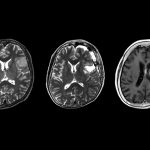
Magnets monitoring muscle movement give hope for prosthetic limbs

Using a simple set of magnets, MIT researchers have come up with a sophisticated way to monitor muscle movements, which they hope will make it easier for people with amputations to control their prosthetic limbs.
The researchers demonstrated the accuracy and safety of their magnet-based system, which can track the length of muscles during movement.
The studies, performed in animals, offer hope that this strategy could be used to help people with prosthetic devices control them in a way that more closely mimics natural limb movement.
Cameron Taylor is an MIT research scientist and co-lead author of both papers in the research.
He said: “These recent results demonstrate that this tool can be used outside the lab to track muscle movement during natural activity, and they also suggest that the magnetic implants are stable and biocompatible and that they don’t cause discomfort.”
In one of the studies, the researchers showed that they could accurately measure the lengths of turkeys’ calf muscles as the birds ran, jumped, and performed other natural movements.
In the other study, they showed that the small magnetic beads used for the measurements do not cause inflammation or other adverse effects when implanted in muscle.
An associate member of MIT’s McGovern Institute for Brain Research, Hugh Herr is also a professor of media arts and sciences, and co-director of the K. Lisa Yang Center for Bionics at MIT.
He is senior author of both papers, and said: “I am very excited for the clinical potential of this new technology to improve the control and efficacy of bionic limbs for persons with limb-loss.”
See also: Nanoscale 3D-printed electrodes could revolutionise neurological treatments
residual muscle
Currently, powered prosthetic limbs are usually controlled using an approach known as surface electromyography (EMG).
Electrodes attached to the surface of the skin or surgically implanted in the residual muscle of the amputated limb measure electrical signals from a person’s muscles, which are fed into the prosthesis to help it move the way the person wearing the limb intends.
However, that approach does not take into account any information about the muscle length or velocity, which could help to make the prosthetic movements more accurate.
In one of the new studies, researchers created an obstacle course of ramps for the turkeys to climb and boxes for them to jump on and off of.
The researchers used their magnetic sensor to track muscle movements during these activities, and found that the system could calculate muscle lengths in less than a millisecond.
They also compared their data to measurements taken using a more traditional approach known as fluoromicrometry, a type of X-ray technology that requires much larger equipment than magnetomicrometry.
The magnetomicrometry measurements varied from those generated by fluoromicrometry by less than a millimetre, on average.
Taylor said: “We’re able to provide the muscle-length tracking functionality of the room-sized X-ray equipment using a much smaller, portable package, and we’re able to collect the data continuously instead of being limited to the 10-second bursts that fluoromicrometry is limited to.”
implanted magnets
In the second paper, the researchers focused on the biocompatibility of the implants.
They found that the magnets did not generate tissue scarring, inflammation, or other harmful effects.
They also showed that the implanted magnets did not alter the turkeys’ gaits, suggesting they did not produce discomfort.
The researchers also showed that the implants remained stable for eight months, the length of the study, and did not migrate toward each other, as long as they were implanted at least 3cm apart.
The researchers envision that the beads, which consist of a magnetic core coated with gold and a polymer called Parylene, could remain in tissue indefinitely once implanted.
Taylor added: “The place where this technology fills a need is in communicating those muscle lengths and velocities to a wearable robot, so that the robot can perform in a way that works in tandem with the human.
“We hope that magnetomicrometry will enable a person to control a wearable robot with the same comfort level and the same ease as someone would control their own limb.”
In addition to prosthetic limbs, those wearable robots could include robotic exoskeletons, which are worn outside the body to help people move their legs or arms more easily.
The research is published in Frontiers in Bioengineering and Biotechnology.
Image: A small, bead-like magnet used in a new approach to measuring muscle position. © MIT.














